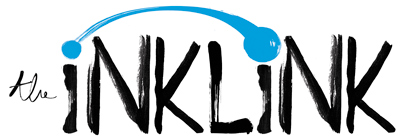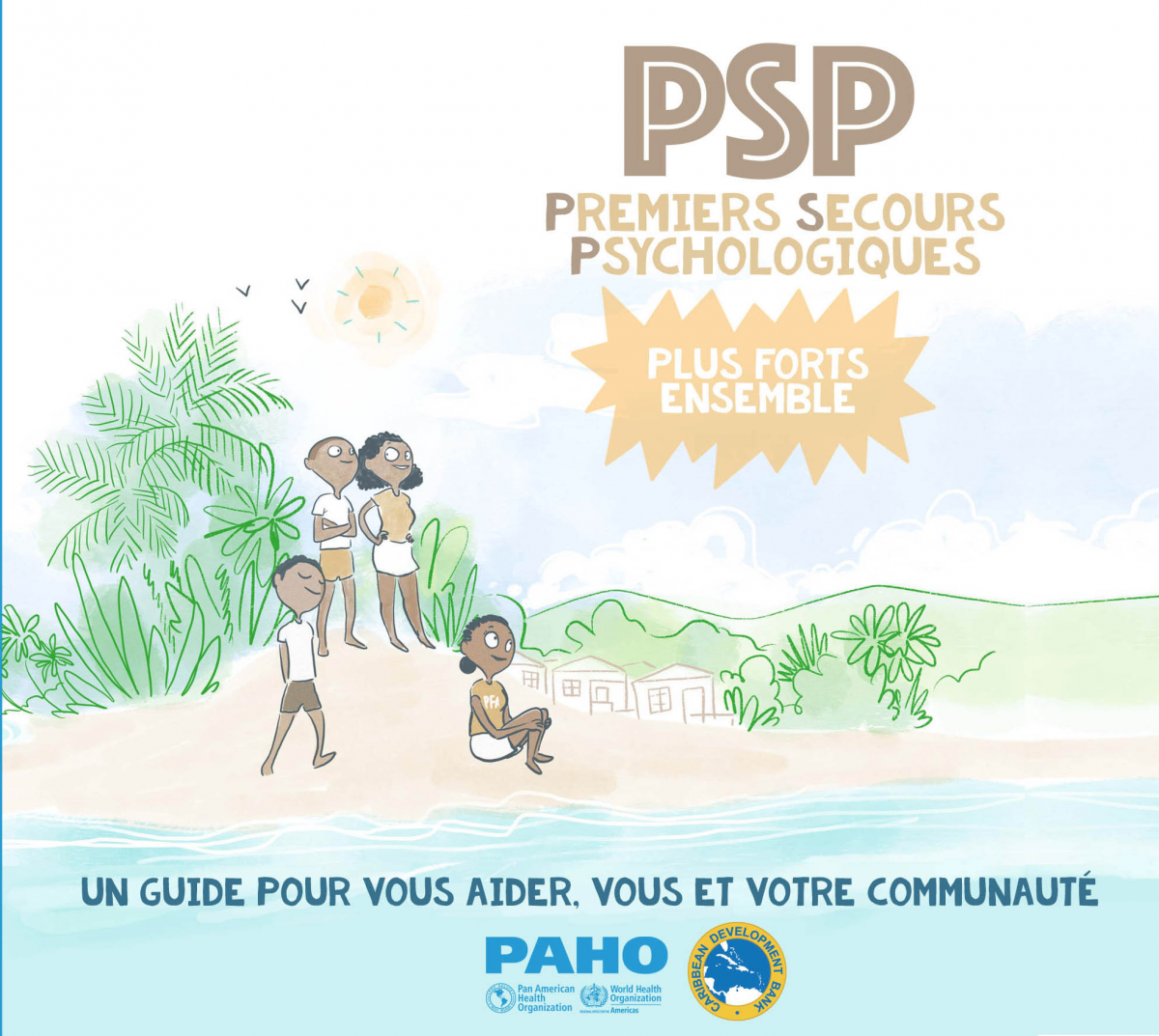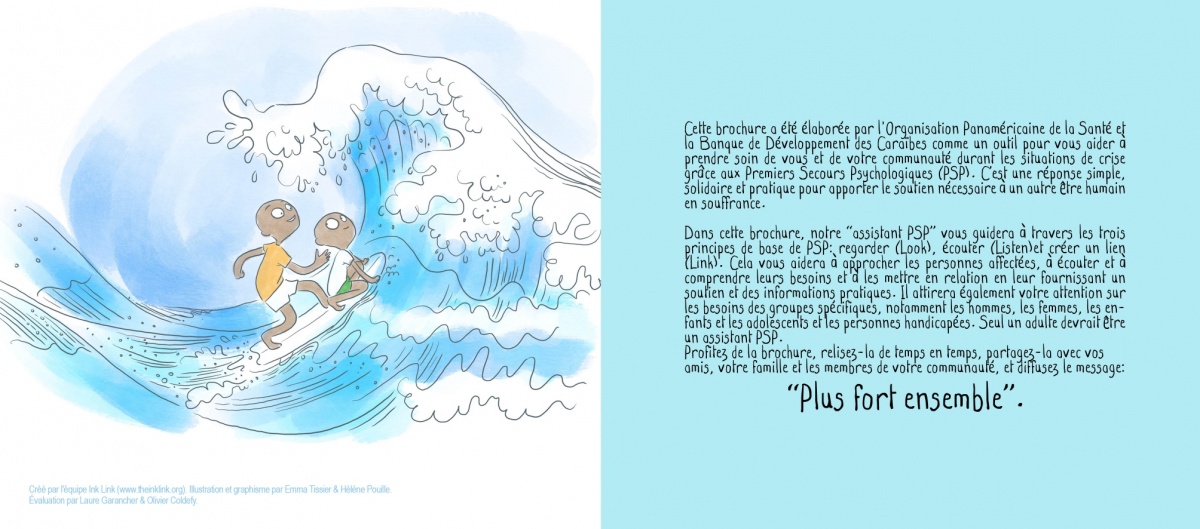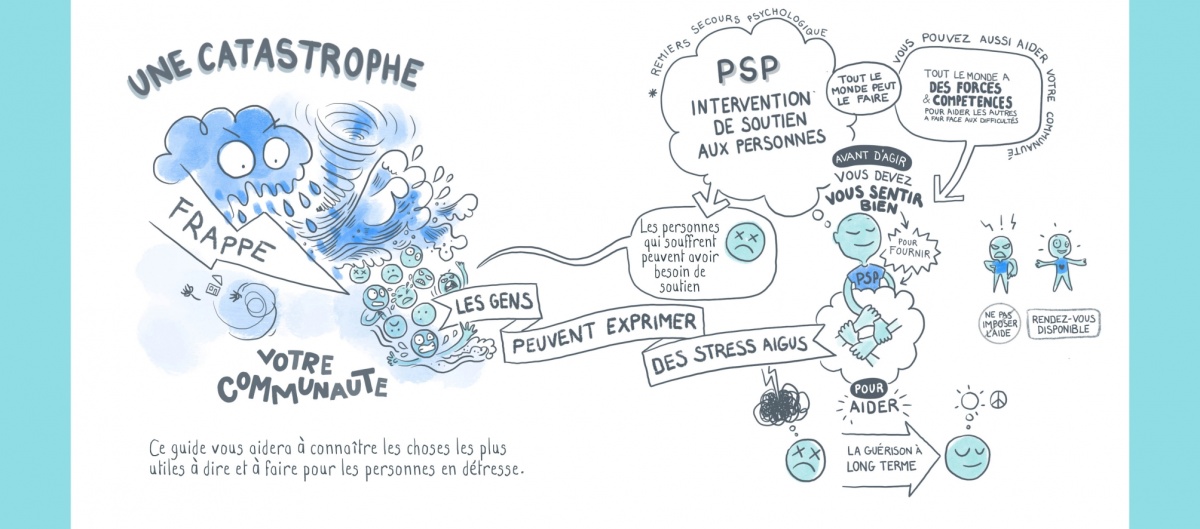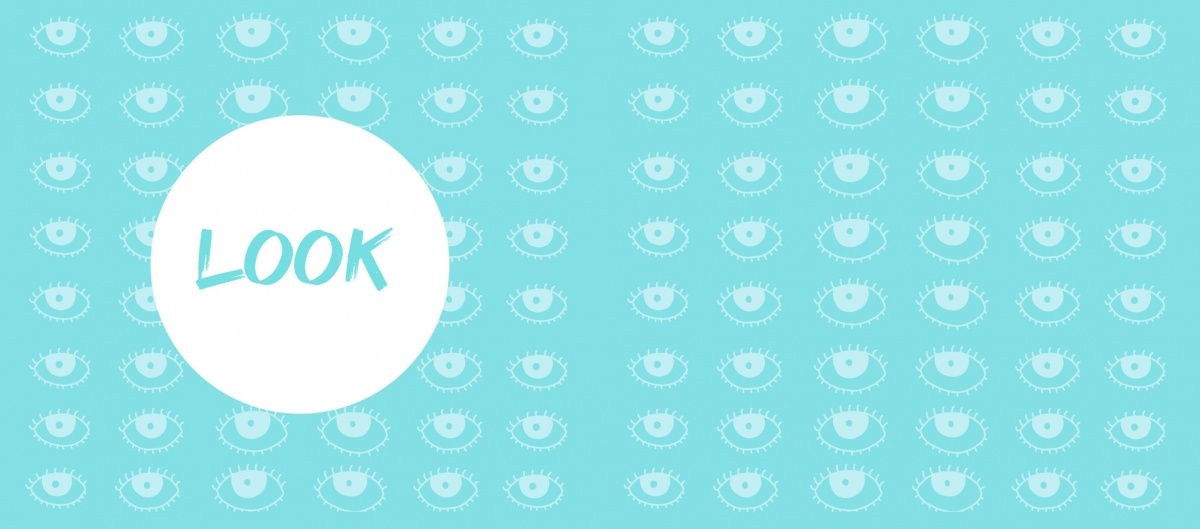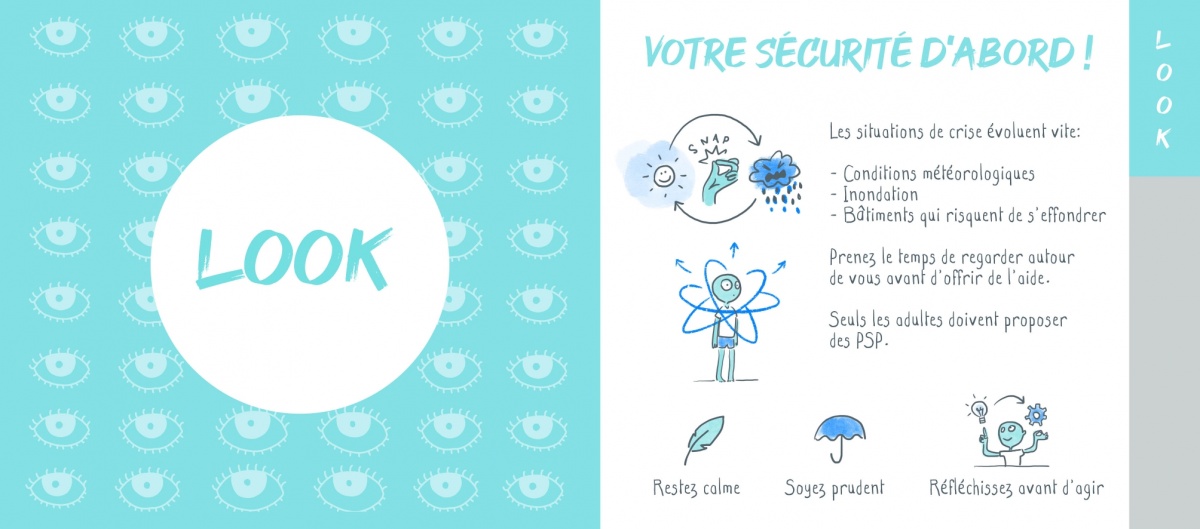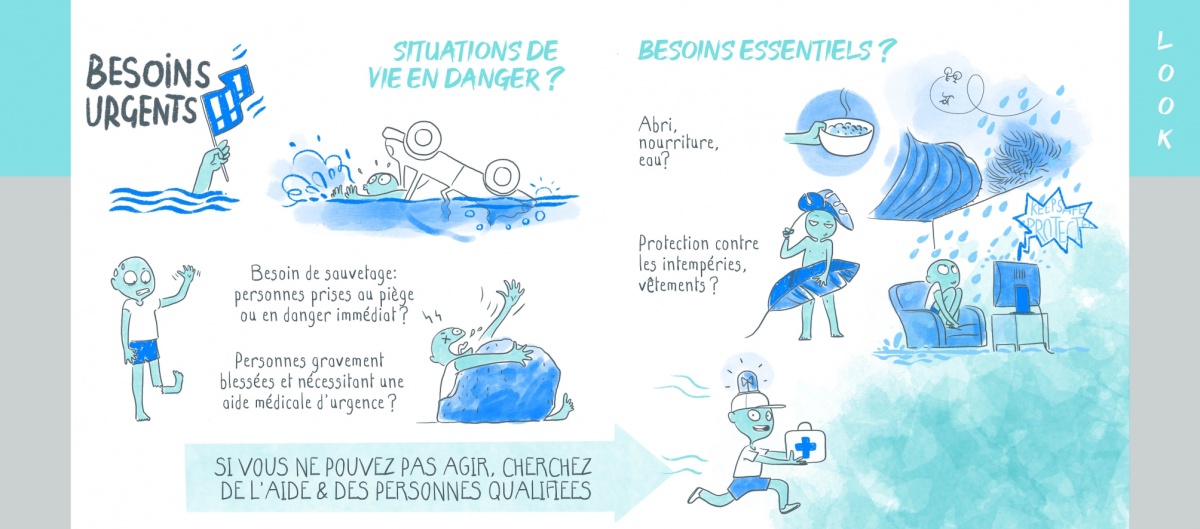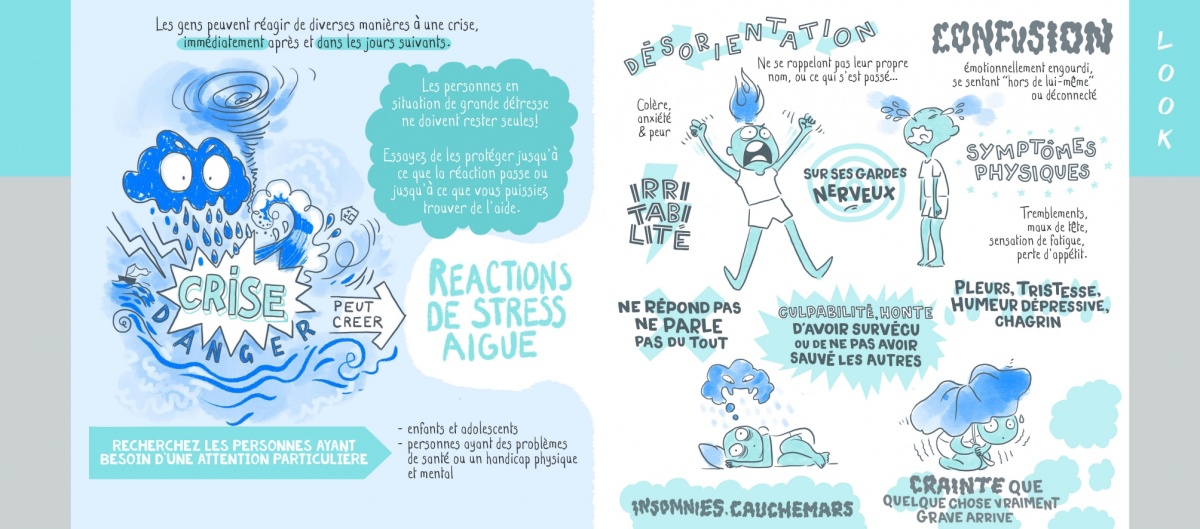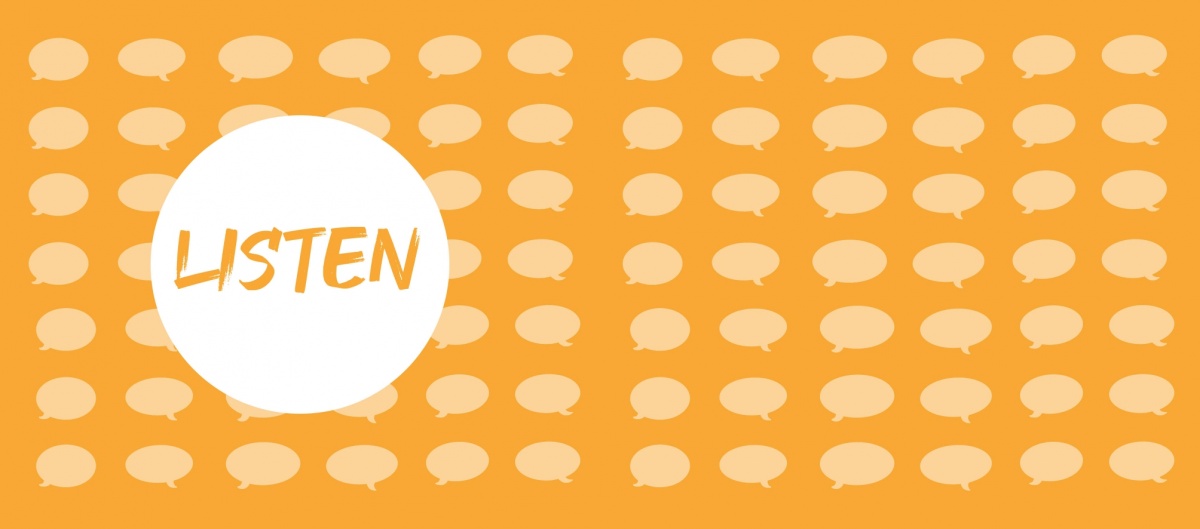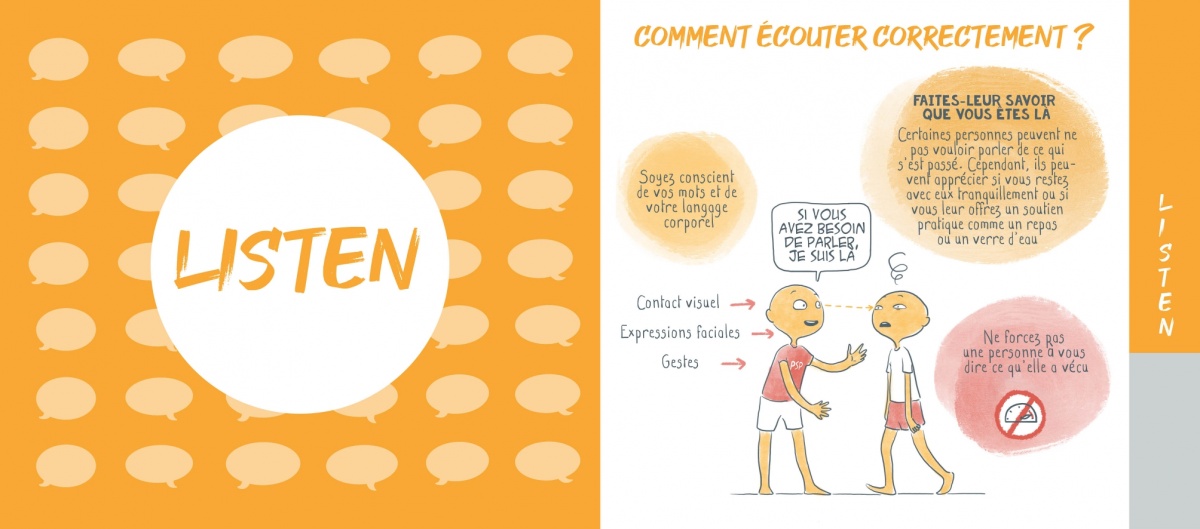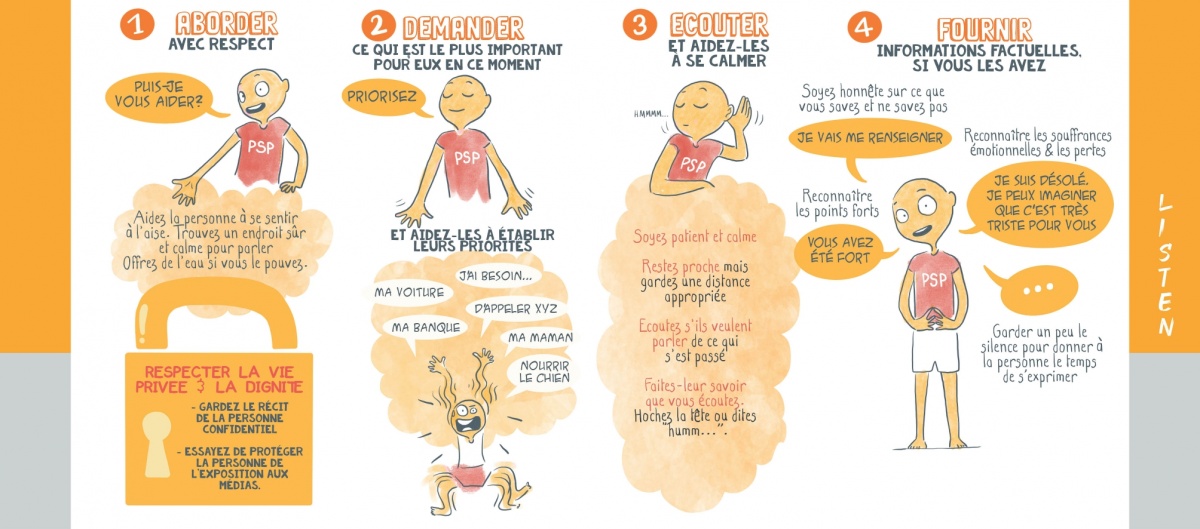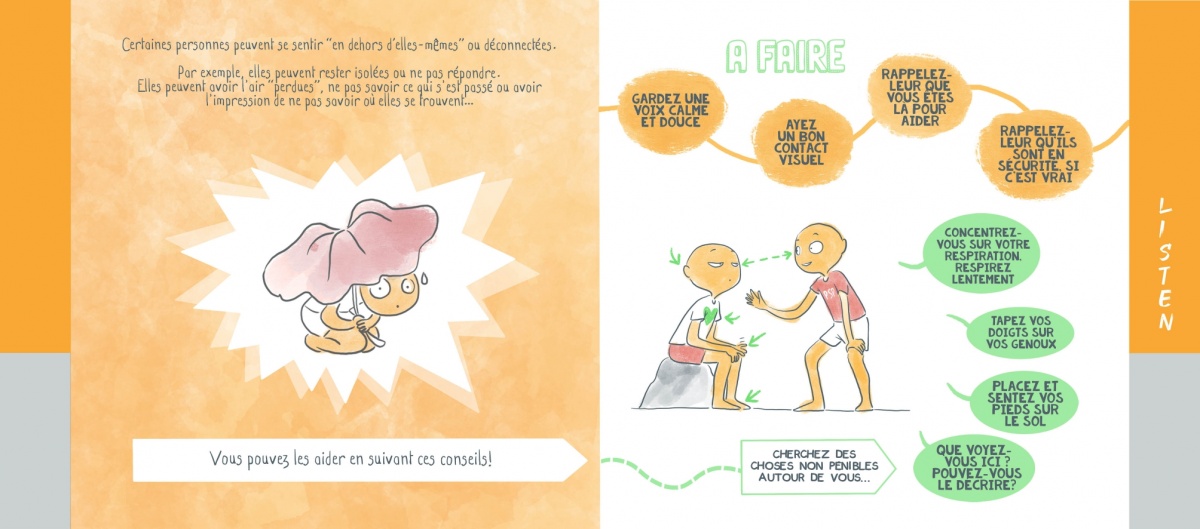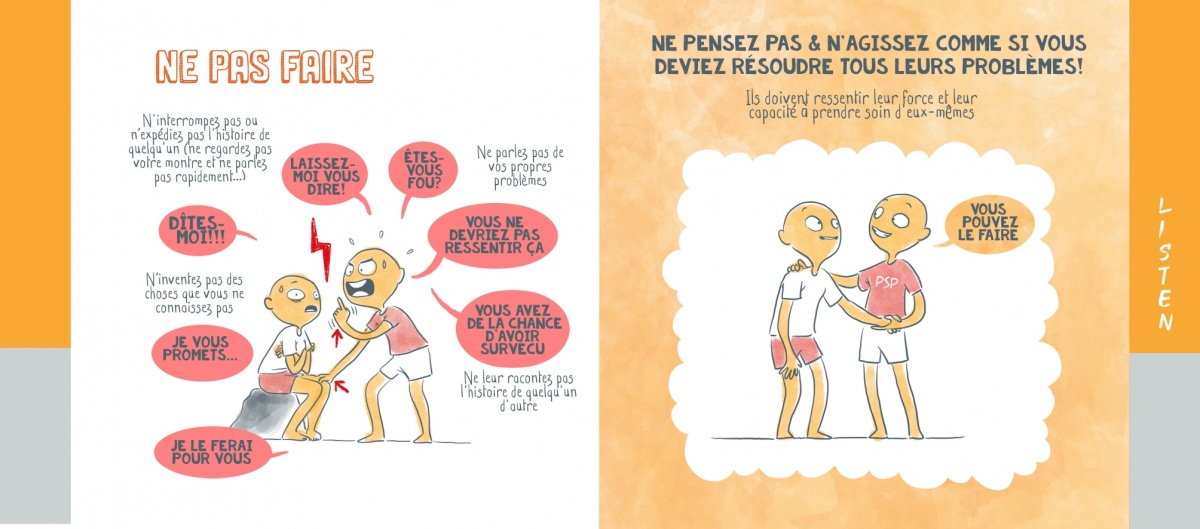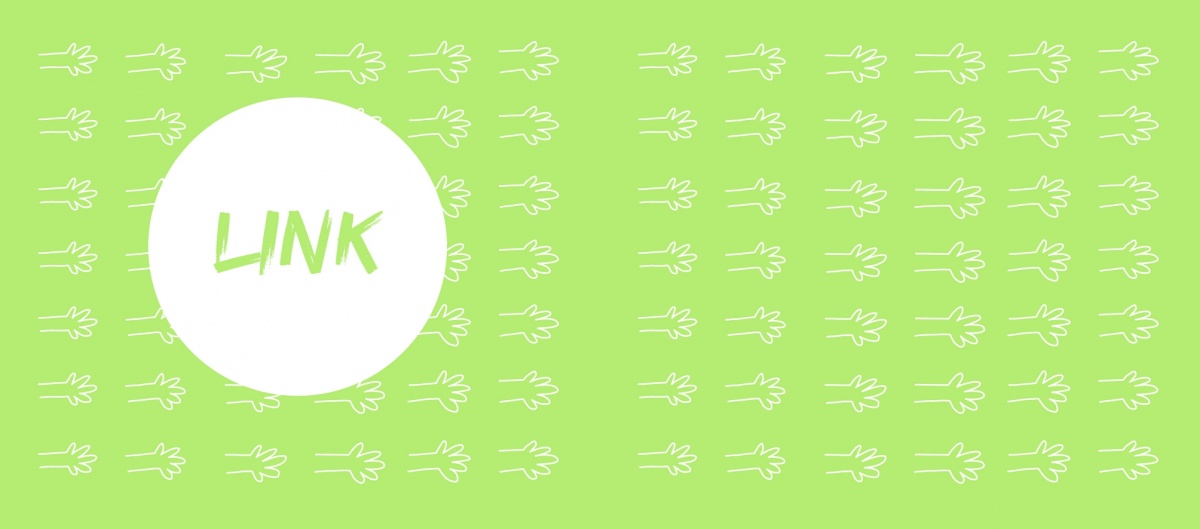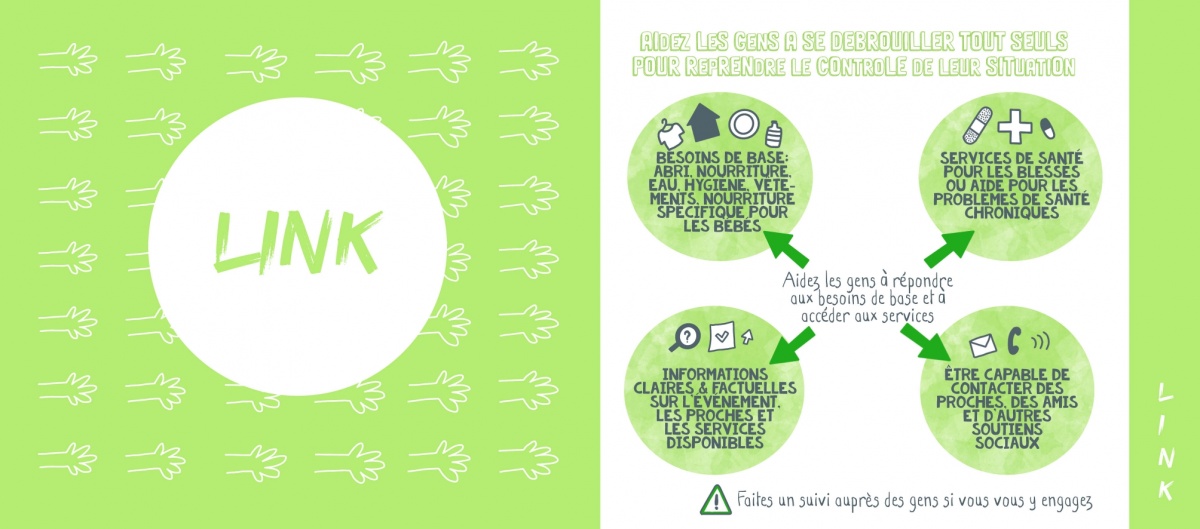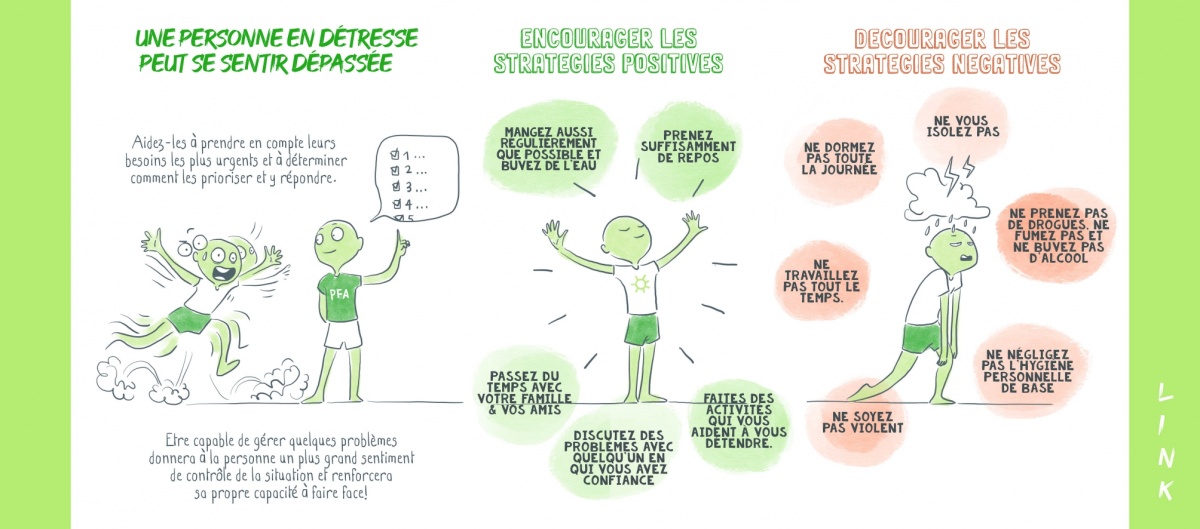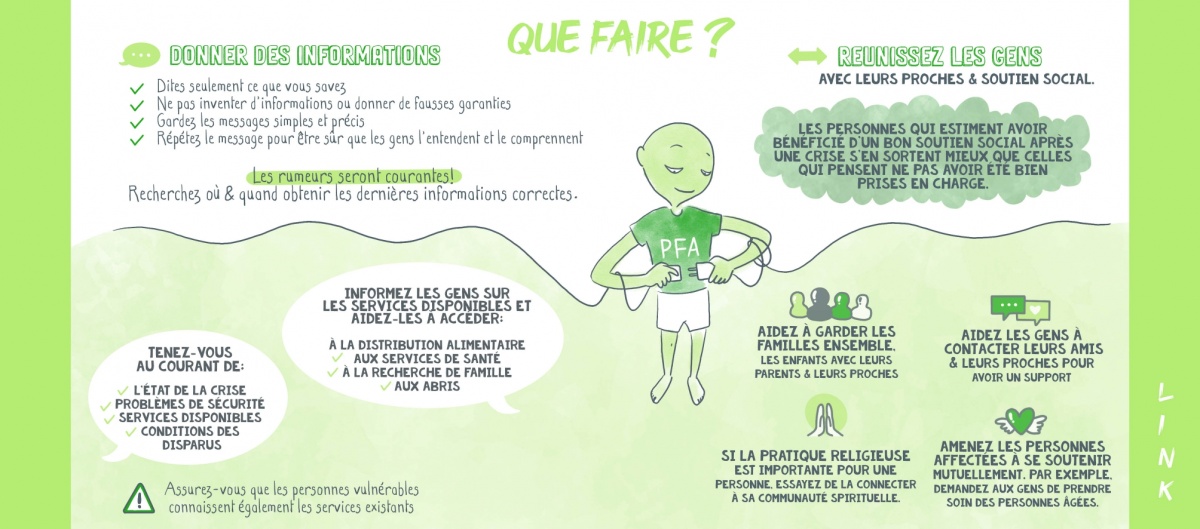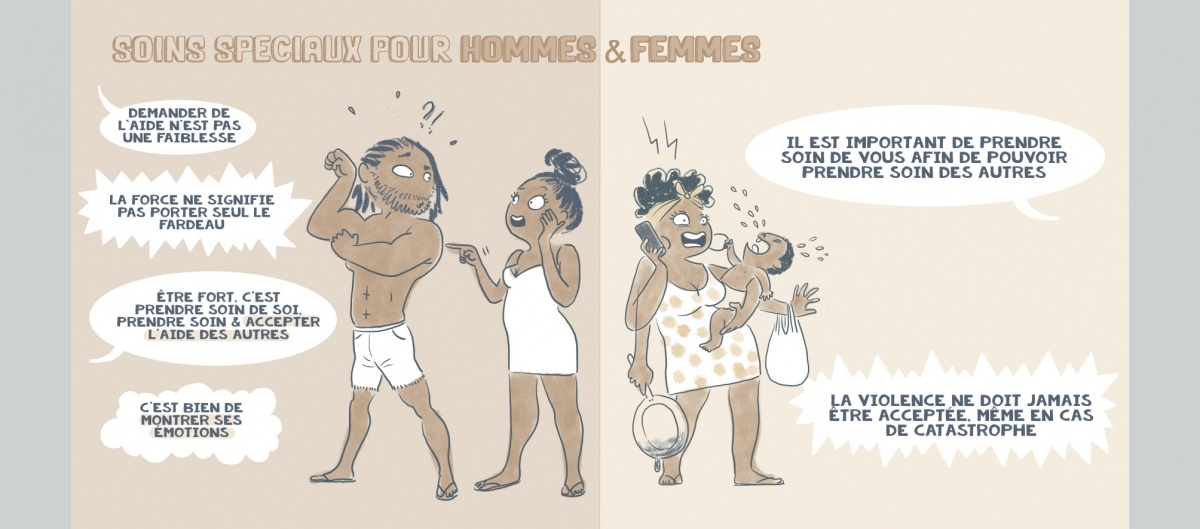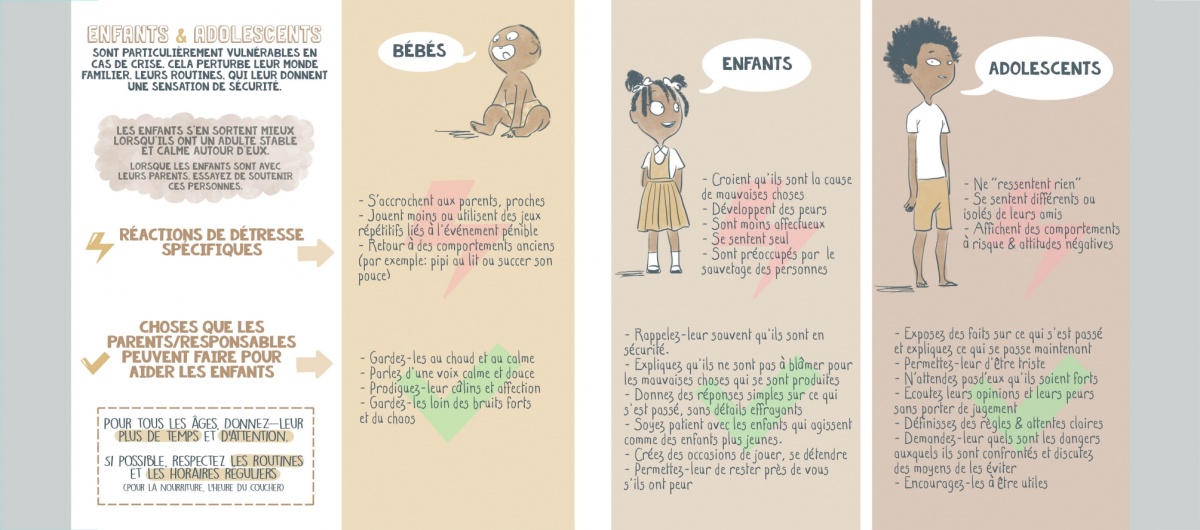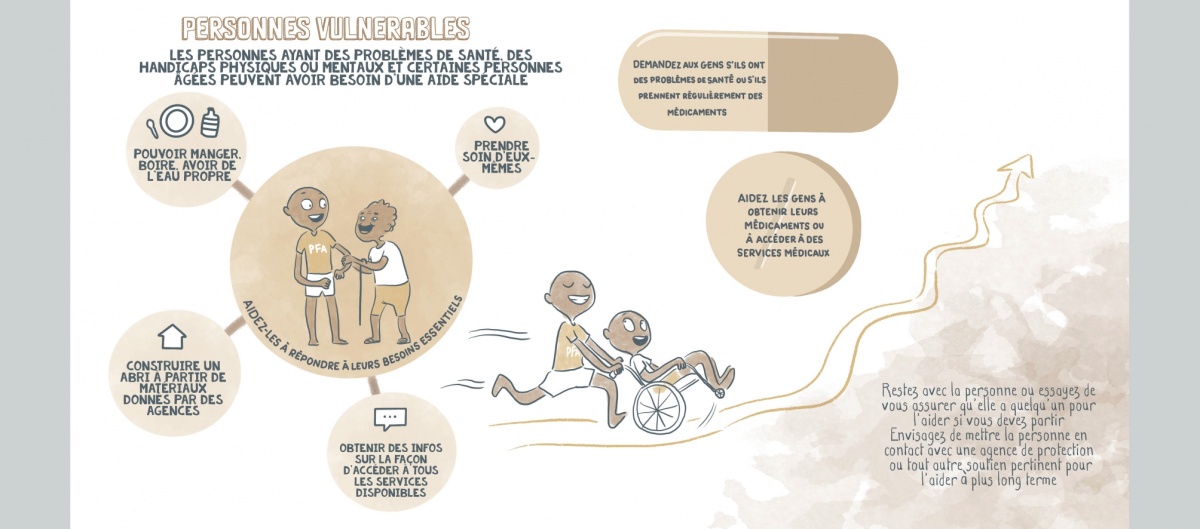Psychological First Aid guide
The Pan American Health Organization
PAHO is a UN agency. It is the equivalent to the American territory of the WHO, and its actions in the health field are internationally recognized. It is involved in improving health systems and living conditions for people in every country. The organization works with local governments, ministries and non-governmental organizations.
The situation in the Caribbean
The region is regularly hit by natural disasters: floods, hurricanes, tsunamis, earthquakes... The majority of people therefore experience one of these major disasters sometime during their lifetime. Safety recommendations are in place to take care of the injured, but health-care personnel trained in the prevention of post-traumatic stress are overwhelmed and unable to provide mental health care.
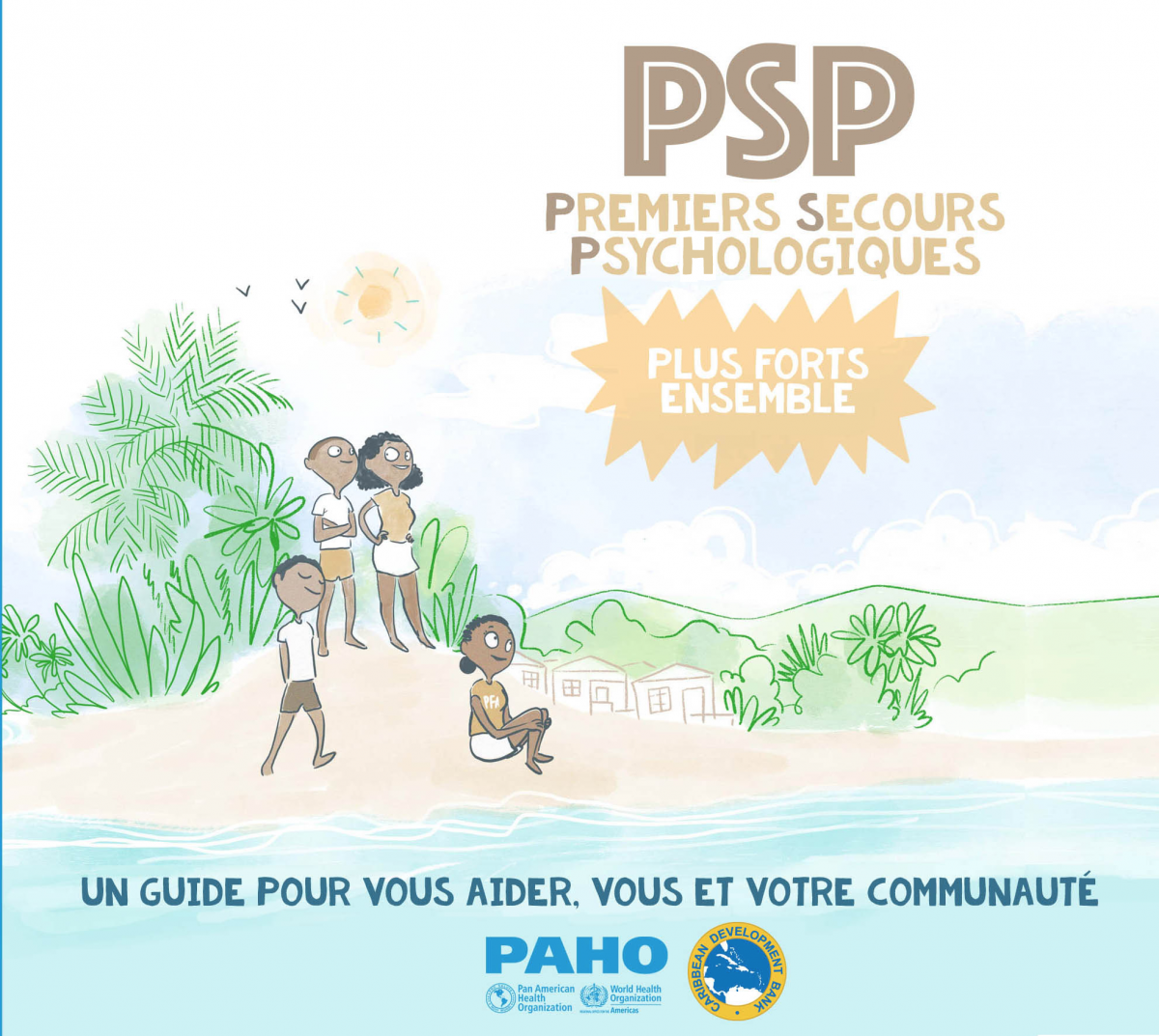
A Psychological First Aid guide
The idea of an illustrated guide for the local population was born. Care would then be taken by the community: everyone would be trained to spot serious or risky situations and to react appropriately. This way, in the event of a disaster, the adults least affected could help the people most affected.
Choosing an illustrated medium
Written guides already existed for medical staff, but it soon became clear that a graphic intervention was essential to disseminate advice and instructions widely and correctly. So we came up with a colorful, attractive booklet that would make people want to read and share it. The images make it easier to understand the signs to look out for and how to react. Above all, they can be assimilated over the long term, so that the reader is reminded of the information months or years later when he or she needs it.
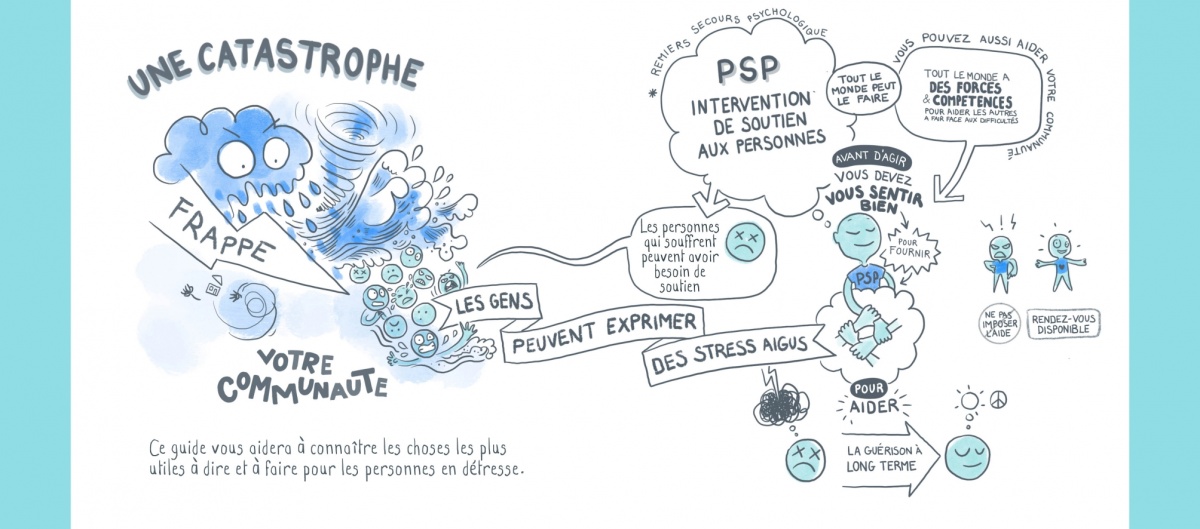
The Ink Link methodology
Based on the theoretical content, our team of health and psychology experts helped to define the subject, priorities and establish the whole document. Illustrated by the creative team, the first versions were used to talk with local PAHO members, who were also testing them on their audience. The technical content was summarized to make it readable and attractive.
Once this first version had been illustrated, our team of experts went on site in the English West Indies to test the object and gather feedback. They were able to observe at first hand any hesitations, misunderstandings or remaining questions. On her return, the guide was improved and optimized as much as possible. For example, the layout of the booklet contains no more than 2 key pieces of information per page.
Two cartoonists illustrating together
For the creative part, we asked Emma Tissier, a cartoonist with a loose line and subtle drawn attitudes, and Hélène Pouille, a graphic facilitator accustomed to transcribing difficult texts into drawings.
Together, they adapted to local knowledge and transformed complex notions and sensitive subjects into an easily understandable and attractive fresco.
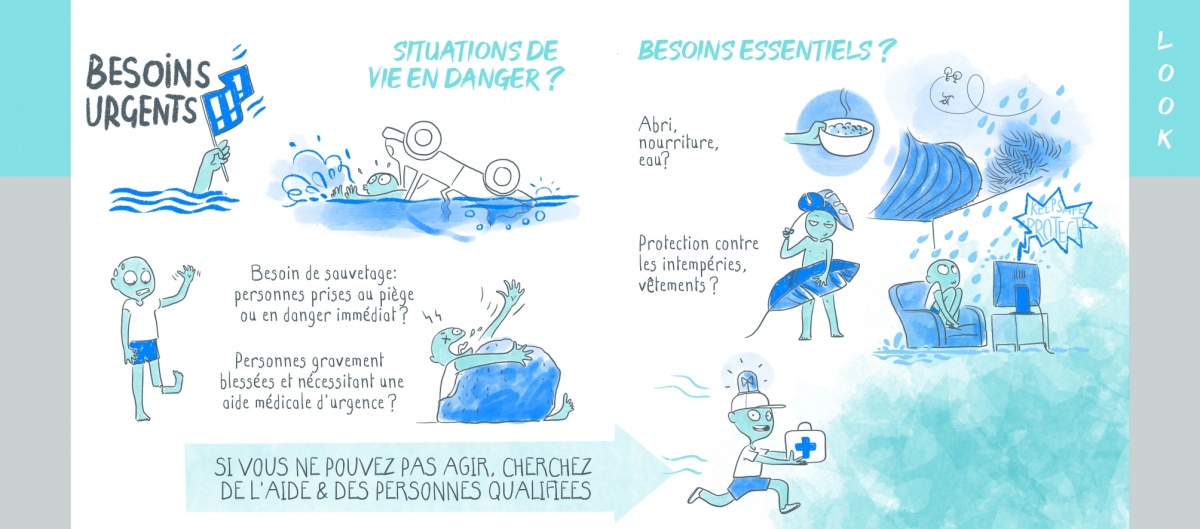
Adapting to the cultural context
Hélène talks about the importance of the cultural environment: "On the one hand, we had to create characters that readers could identify with (which means they're more likely to be in shorts than in a down jacket), but we also had to make sure that the codes used were clearly identifiable. What may seem like a universally shared reference to us isn't always: for example, the yin/yang symbol didn't work at all in the Caribbean!"
Our team also worked on equitable gender representation, and ensured that skin colors allowed everyone to identify with the characters drawn.
The Psychological First Aid guide
Entitled "Stronger Together", the medium is currently a colorful 20-page booklet. It is divided into three sections: look, listen and link, in order to identify and support the different stages of post-traumatic stress. Thanks to its colorful markers, dynamic illustrations - not without a touch of humor - and precise, memorable information, it informs the local population and supports mental health care.
The guide is set to evolve over the coming weeks: it will be supplemented with information on current pandemics and domestic violence.
Initially produced in English, it has now been translated into Creole, French and Dutch. Download here.
